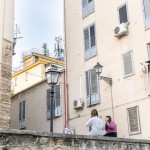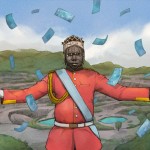Countries in the single market of the European Union charge value added tax (VAT) on goods and services. Each country sets its own rates within EU guidelines; they range from 17 percent in Luxembourg to 27 percent in Hungary.
The VAT can be significant for big-ticket items like farm machinery, which can cost hundreds of thousands of euros. Bulgaria has charged a VAT of 20 percent for at least a decade, while Romania’s levy was at 24 percent between 2010-2015 and has more recently dropped to 19 percent.
Because the tax is so substantial, some countries fail to collect all they should. The EU tracks what is called the “VAT gap” — the difference between what a country is expected to collect and what it actually collects.
In 2016, Romania’s VAT gap of nearly 36 percent was the largest of the 28 EU countries, costing it an estimated 6 billion euros a year. Bulgaria, on the other hand, reduced its VAT gap from 21 percent to 14 percent, the most significant improvement in the EU bloc. More prosperous countries like Sweden and Luxembourg show gaps of about 1 percent.
Unlike a sales tax, which is charged only when a finished product is sold to a consumer, a VAT is charged at every stage in the production process, from raw materials to final purchase. At all but the final stage, the payee can in some countries file for a tax refund once the product moves on up the production chain.
The VAT is not applied when finished items produced in one EU country are shipped into another EU country, but is collected at final sale in the country where that occurs. So, a farmer in Romania who bought a harvester imported from Germany in 2014 should have paid 24 percent VAT, most of which would have gone into the Romanian treasury with a small percentage paid to the EU budget.
The alleged scam under investigation resembles a “carousel” fraud, in which fake companies generate a paper trail of transactions to obscure the fact that a tax needs to be paid. The carousel in the snowball scam was a small one, involving just two companies in two different countries.
But that was enough to confuse tax officials – at least for a while.



